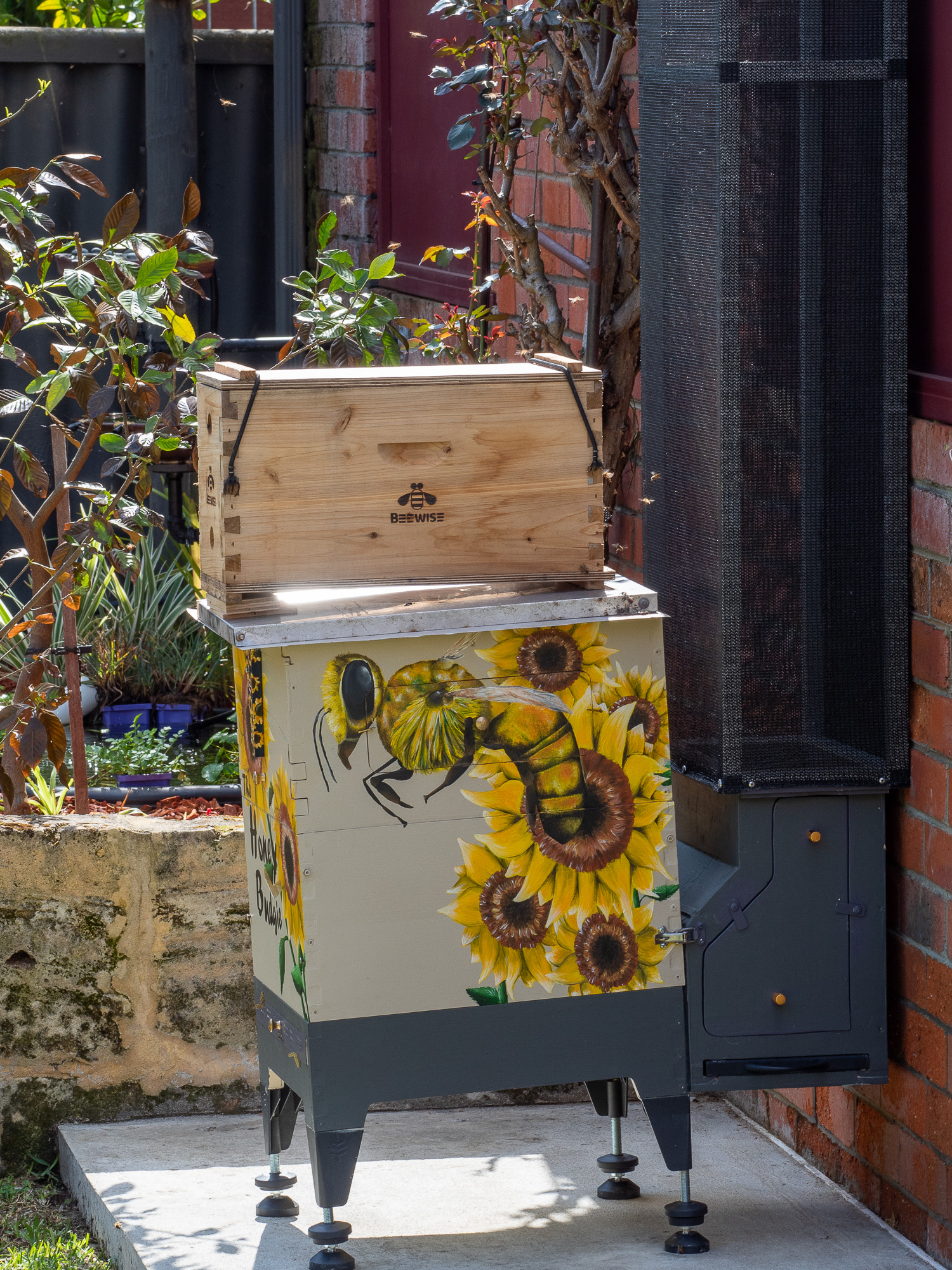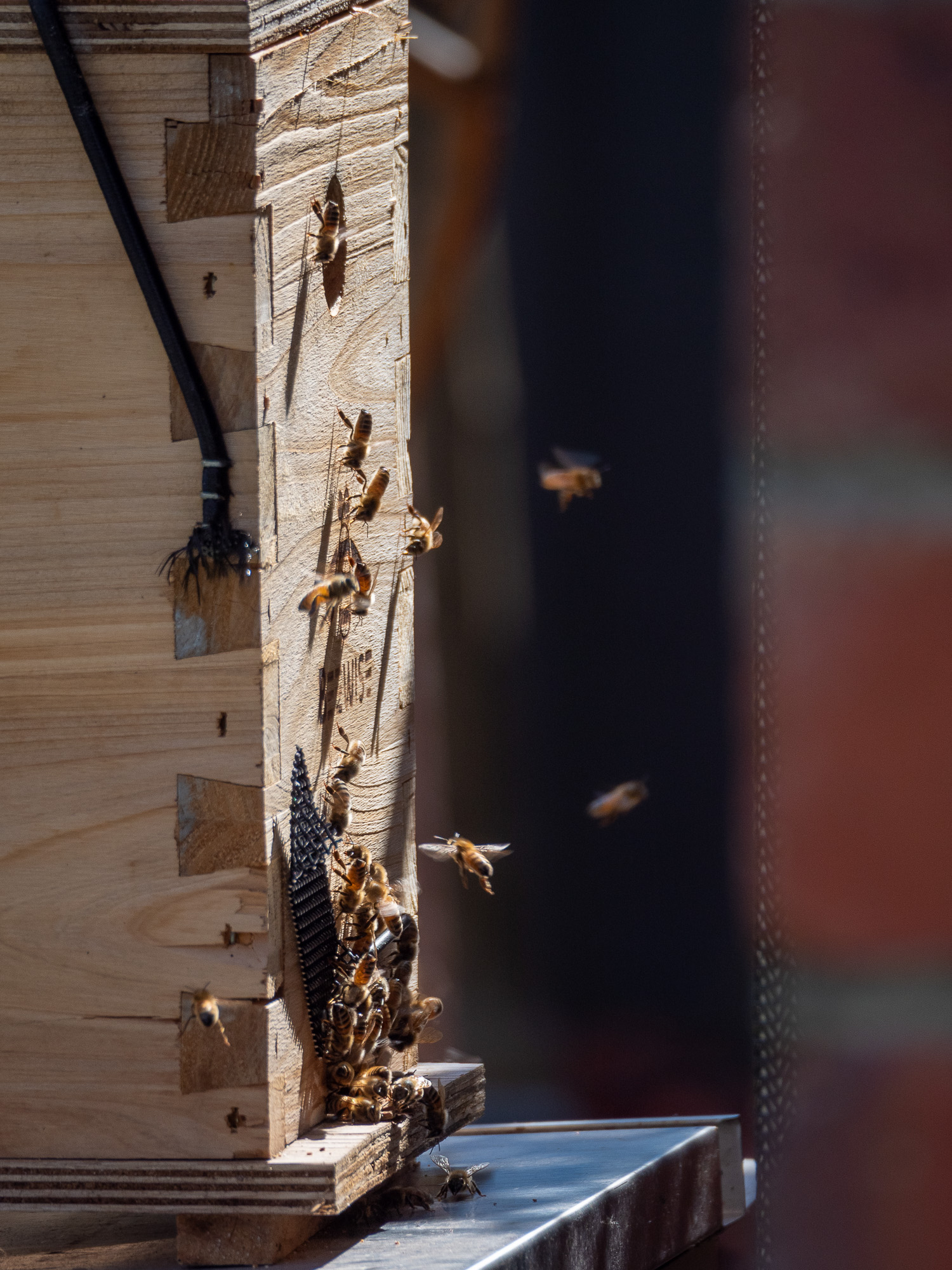Ok, so I have a brand new, beautifully painted hive in the backyard but no bees.
Unfortunately, beekeeping isn’t like Kevin Costner’s “Field of Dreams”. So, despite having an empty hive, it’s very rare for a population of bees to actually find it and take up residence. You can buy scent lures for bees, however, these rely on a swarm being nearby who are looking for a new home. Additionally, for a novice beekeeper, I don’t want a bunch of “random” bees making my hive their home as I’ve got no knowledge of their temperament. Yep, that’s right. A bee colony has a “temperament”. Ranging from docile if you’re lucky; through to nasty little bastards who hate the world and see humanity as a destination for their final kamakazi flight, stinging their way to death for the glory of she who is their queen!
You definitely don’t want the latter kind…
My bee buddy Derek, supported by the research I’d done, confirmed that the temperament of a hive is dictated by the queen. But, how to get a docile queen? You buy one from a reputable docile queen bee breeder of course!
A quick Google listed a number of local bee breeders, many of which stated that they bred queens from the world-famous Rottnest Z line of queens. I’d rapidly learned that Rottnest Island is a bee breeder’s heaven. You see, a bee can only fly about 8kms from its hive. And, Western Australia is not only isolated from the rest of Australia’s European honey bee populations by a great expanse of desert, but Rottnest Island is 14km off the coast of Peth – too far for bees to fly. This makes the island the perfect place to develop and breed bees that are pest-free and docile. Rottnest Island bred queen bees have been known to sell for up to $1000 each!
Contacting a local breeder, I put my name on the list for a NUC, pronounced “nuke”, which is a box containing 4 frames and a small colony of bees, including a newly mated queen. I placed my order for a NUC in June and was told they should be able to provide it in Oct. Luckily for me, my bee supplier managed to organise a NUC early and I was able to pick it up in early September.

After getting the NUC home, the first priority is to place it on the location of the eventual hive and allow them to orientate themselves.
Have you ever tried using the compass function on your mobile phone? If so, it’s likely that your phone wanted you to first move your phone in a figure 8 pattern so that it could calibrate the compass? Well, bees when moved to a new location do exactly the same thing! After opening our NUC, we then sat and watched a couple of hundred bees exit the NUC and fly an increasingly larger figure of 8 patterns over the NUC location, before returning and re-entering the NUC box. Relocated, or newly hatched bees will perform this orientation flight as they exit their hive for the first time.
You leave the open NUC in this location for up to a week, before relocating the NUC frames into your hive.
